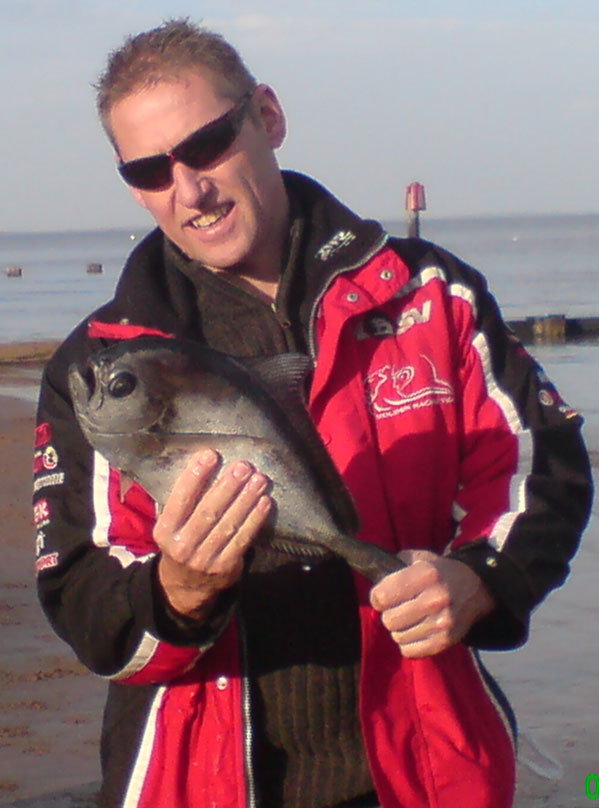MARINE
LIFE NEWS
Reports
of marine wildlife from all around the British Isles, with pollution incidents
and conservation initiatives as they affect the flora and fauna of the
NE Atlantic Ocean.
-------------------------------------------------------------------------------------------------------------------------
9 November
2007
A
tidal
surge threatened the east coast of England.
Low pressure and strong winds caused the surge. Norfolk and Suffolk had
eight severe flood warnings. High tide occurred at 7:41
am at Great
Yarmouth where the surge waters caused
minor flooding and at a few other places along the coast.
5
November 2007
A
Ray's
Bream,
Brama
brama, was
identified by staff at Hunstanton's
Sea Life Sanctuary after a chalet attendant found it on the town's
beach. Up to 20 in (50 cm) in size with sharp teeth, the fish are common
near Iceland.

4
November 2007
A
Ray's
Bream,
Brama
brama, was
discovered by our Dalmation dog flapping around on Cleethorpes
beach (near Grimsby) at low tide. It died shortly afterwards. Its identity
was confirmed by its row of sharp teeth.
Early
November
More
reports have come in of Ray's Bream,
Brama
brama, washed up on the beach in Norfolk. Four reports via
Hunstanton's
Sea Life Centre show individuals washed up at Snettisham, Heacham and
Hunstanton.
1
November 2007
A
large nine metres long whale was washed up dead in the Humber estuary.
It was probably a Fin Whale, Balaenoptera
physalis.
28
October 2007
A
Quahog
Clam, Arctica islandica,
dredged up off the coast of Iceland was thought to be between 405 and 410
years old and the oldest animal* alive
on Earth until it was killed. Researchers from Bangor
University in north Wales said they calculated its age by counting
rings on its shell.
(*This
may exclude cnidarians.)
16
October 2007
Large
Helford Sea Hares
Tony
Sutton was diving on the eelgrass bed at 5.7
metres depth in the Helford
Voluntary Marine Conservation Area, Cornwall, when he came across some
exceptionally large greenish brown sea-hares (35 cm) which attracted his
attention. When he returned a few days later with his camera he was able
to take some excellent pictures which indicated the species Aplysia
depilans. Confirmation of this
identification was established by Dr
Paul Gainey when one of the animals was
taken briefly from the water.
Full
Report and Photographs on the Helford VMCA News web pages
14
October 2007
Aplysia
fasciata at the National
Marine Aquarium
A
specimen of 30 to 35 cm and weighing 1.5 kg was caught in Poole Bay, Dorset,
just outside of Poole Harbour in a trammel net by John
Green of the FV.
Serendipity. It was caught in 3 - 4 metres
of water on sand on a flooding tide, while fishing for sole and bass.
Subsequently a further four large
sea hares
have been caught by fishermen in the same area.

Sea
Hare, Aplysia fasciata
Photograph
by Doug Herdson
It
was brought into the National Marine Aquarium
at Plymouth where it is now on show as our
"Feature Creature"
in our recently refurbished Shallow Waters, Hidden Depths exhibit, where
it is devouring very large quantities of sea lettuce Enteromorpha
latuca.
Previously,
only six specimens of this southern species of sea
hare have been recorded in British seas.

Aplysia,
the size if which (between 30 & 35 cm) indicates that it is Aplysia
. fasciata. It was photographed swimming
in Helford River,
Cornwall. It was seen by Steve Potter on
25
August 2007.
Aplysia
fasciata is the largest and the rarest of the three species of
sea hare found in the British Isles. It is an Atlantic species, found from
the Channel to Angola (South west Africa and to Brazil) and also throughout
the Mediterranean. It appears to reach its northern limit in Ireland and
along the English Channel coast.
It
is one of the largest sea slugs in the world. The other two British species
are the relatively common Aplysia
punctata variable in colour and growing to 20 cm; and the rare
Aplysia
depilans with different shaped back
lobes, brown or green and growing to a maximum of 30 cm.
BMLSS
Molluscs
BMLSS
Aplysia
Sea
Slug Forum Species List
4 October
2007
Ray's
Bream,
Brama
brama, appear to have been relatively common off the west coast
of Ireland this year. They are frequently taken by Spanish registered long-liners
while targeting Hake.
Almost five tonnes were taken off the north-west coast and landed into
Killybegs
by a single vessel. Another two tonnes were landed on 18
October 2007.
BMLSS
Ray's Bream
FORUM
NEWS
Marine Wildlife
of the North-east Atlantic Ocean Mailing Groups
With
the closure of Smart Groups at the end of November
2006 most of the 7500+ messages have been
filed at:
Marine
Wildlife of the North-east Atlantic Ocean Jiglu
http://www.Jiglu.com/spaces/glaucus/
For
ongoing messages please transfer to the Yahoo forum as I think you will
find that easier to use.
Marine
Wildlife of the North-east Atlantic Ocean Yahoo Group
New
Group: http://uk.groups.yahoo.com/group/Glaucus
Images
can be uploaded to flickr.
http://www.flickr.com/groups/glaucus/
NEW
Wet
Thumb (Marine Aquariology) Forum Link

------------------------------------------------------------------------------------------------------------------------
All
reports by Andy Horton unless the credits are given
to
other observers or reporters.
Cornish
Marine Wildlife (Ray Dennis Records) 2005
|

